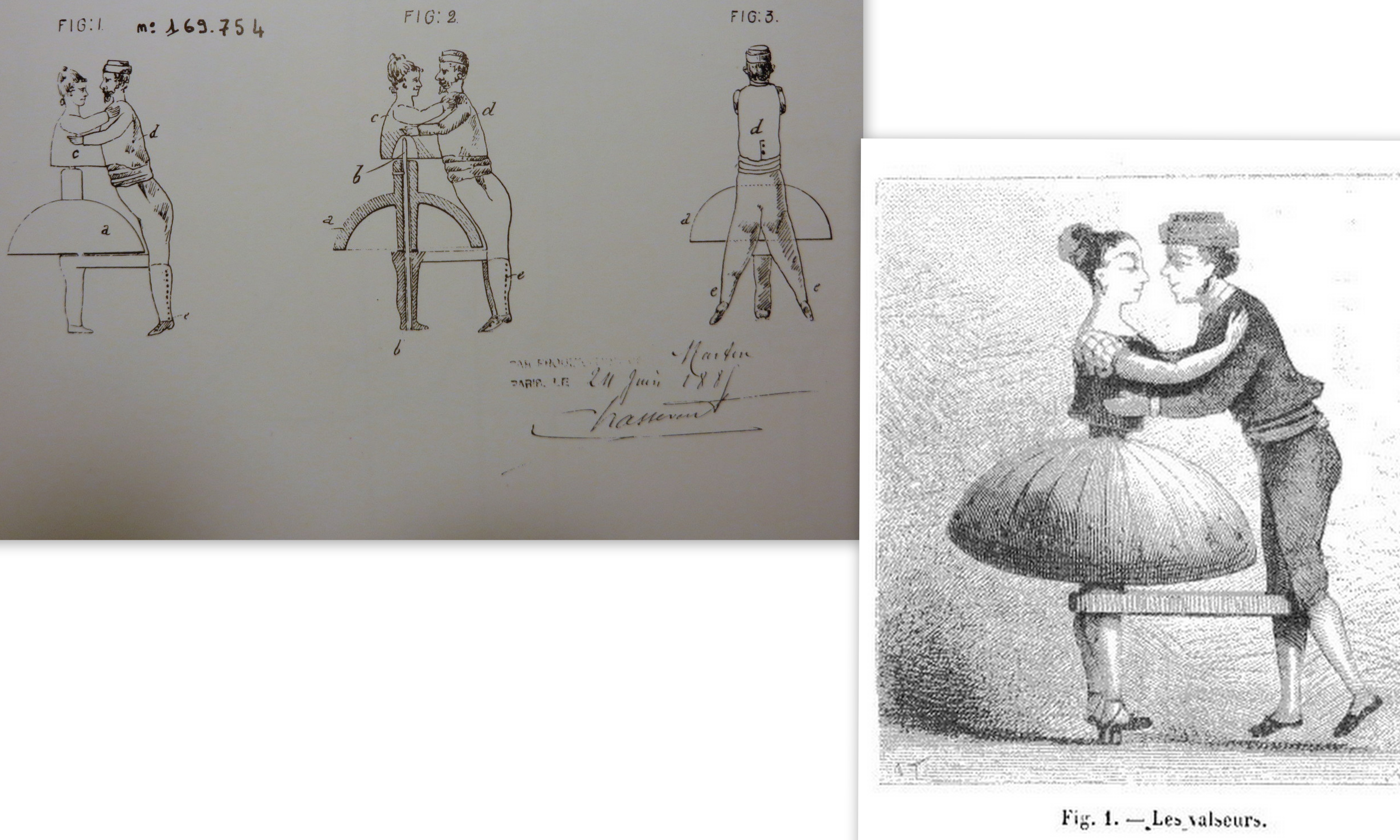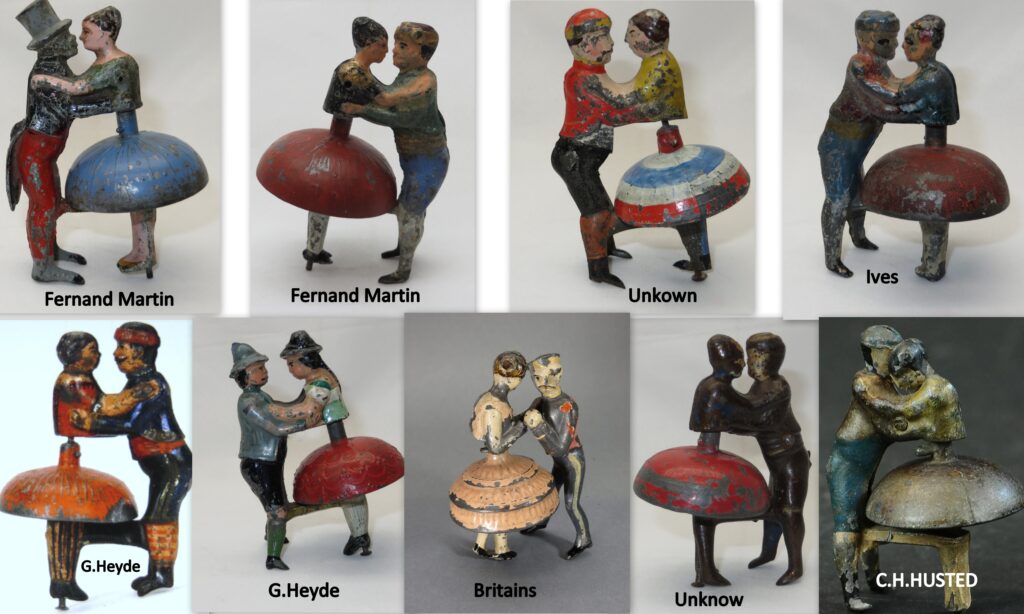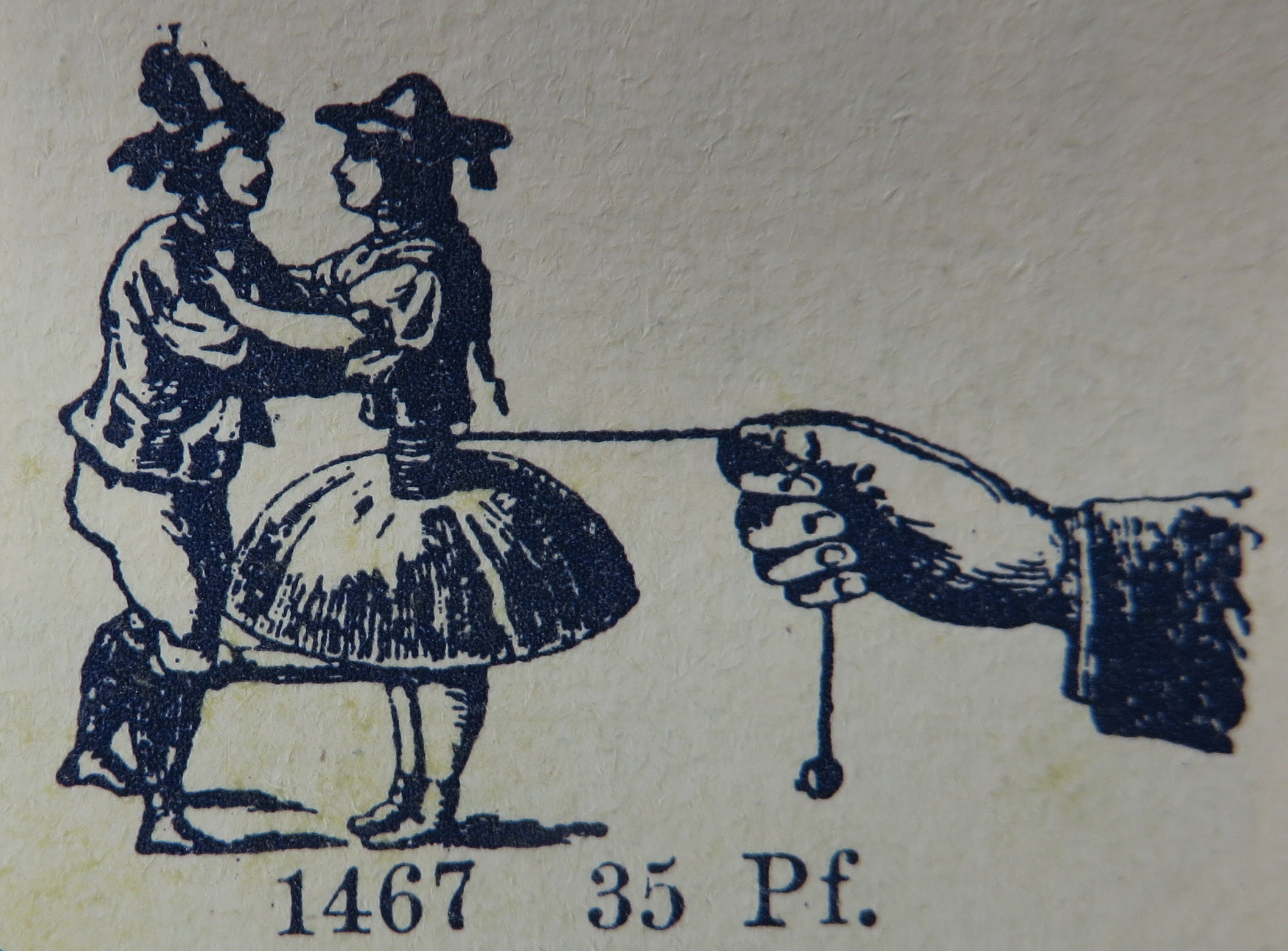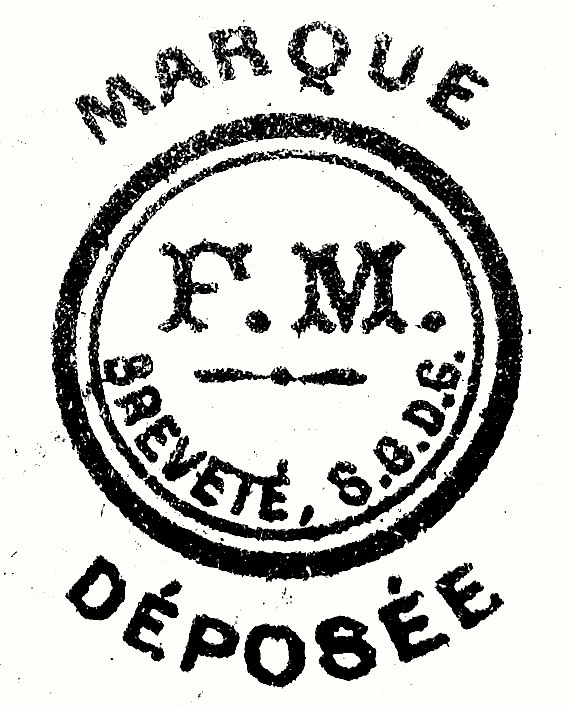I already published this before in 2019, but I find a new one and new information.
Martin has produced two tops in his very early years.
The French name is Les Valseurs and first made in 1885.
Product number unknown (In the books known to us, this toy has the Martin product number 15 which is not correct, this trapeze artist has probably not been given a product number.)

Patent:
Martin has applied for a French patent for the dancing couple with the man with the cap under number 169754. (see patent sheet above)
But for these two different models are different patent number found on each box, the one with the top hat has patent number 56947.
I can’t put it in the French, English and American patent number ranges at that time, but it is probably a German patent from about 1890/91.
In Germany the patent ranges between 56000 and 57000 were active around 1890/91. (see in the German DPMAregister ) Maybe Martin did not get this patent number approved because this number is not listed as “granted”.
For pictures of the two boxes, see the book Fernand Martin Toymaker in Paris on page 45.
The English company Britain also launched the same type of top around the same time and applied for a patent with number 13671 in England in 1884. ( I found the patent number and year in a official paper of a trail beween Britain versus Hirsch in March 1888. A part of the text : “ In 1884 a patent No. 13,671 of 1884, was granted to William Britain for an automatic dancing figure.”) source: www.academic.oup.com page 226 REPORTS OF PATENT, DESIGN, May 05 1888.
These tops have been made more often, it could be without justifying the patents, or by paying the patent holder or even by plagiarizing
Furthermore, you had to apply for a patent in every country before 1900, but that was not done because the costs were sometimes quite high.
The entire patent event at the end of the 19th century was not as well regulated as it is today.
There are more of this kind of tops:
I’ve discovered, till now, nine different of these waltzing spinning tops so far, but maybe there are more, here an overview of the tops that I found till today:

- –Fernand Martin, two pieces marked on the bar between the legs with FM Paris, the one with the cap is from 1885 the other one with the high hat is probably from 1890 and is extra marked on the other side off the bar with the patent (Breveté) number: SGDG 56947.
-One unknown and unmarked maker of made with partial tinplate, this one is probably from Germany.
-The United States company Ives made one exemple, this one looks a lot like one of the Martins but is unmarked.
-Two pieces by G. Heyde ( provenance the book of Lourens Bas: The Lost Art of Spinning Tops) from Dresden Germany, presumably around 1885 one ( with the red skirt and the both figures with a hat ) is marked on the bar between the legs with G.H. (George Heyde), the other one with the orange skirt I don’t know if that one is marked.
-The English Britains one piece from about 1885, not marked and made in different colors.
-And another unknown and unmarked maker which is made from cast iron so presumably from the United States.
-And another new find that was made in the USA, of hoop skirt embossed lettering “C.H. Husted,” sold in the Bertoia auction on September 11-2021 (photo courtesy Bertoia Auctions)
Breveté S.G.D.G.
Breveté S.G.D.G. is the name of a patent as it was in France until 1968.
The term stands for “Breveté Sans Guarantee of Government” and means: “Patent without government guarantee”.
Many countries adhered to a system of registration for a simple formal exam over many years.
One believed himself free from any liability.
In France, the Law of 1844 provides that the patents shall be issued “without prior examination, at the risk and risk of claimants and without guarantee of function, novelty and merit of the invention, also with regard to precision or accuracy of description”.
Working:
The principle is the same for all spinning tops.

In the middle of the female, just above the skirt, is a small rod, you put a loop of a string around it and then turn the skirt around by hand so that the string wraps around the waist.
The female stand not completely upright but that is the intention.
The female stands on a kind of pin under the feet, this is loose and therefore it can turn completely.

By placing the dance couple on the floor and then pulling the string tightly, the skirt starts turning quickly,
Because of the center-flying power, the female stands up and the male turns around the female.
These toy tops are around 130/140 years old and very rare to find, but they are so beautiful.
These tops are not only wanted and sought after by “Martin” collectors but also by spinning top collectors.
